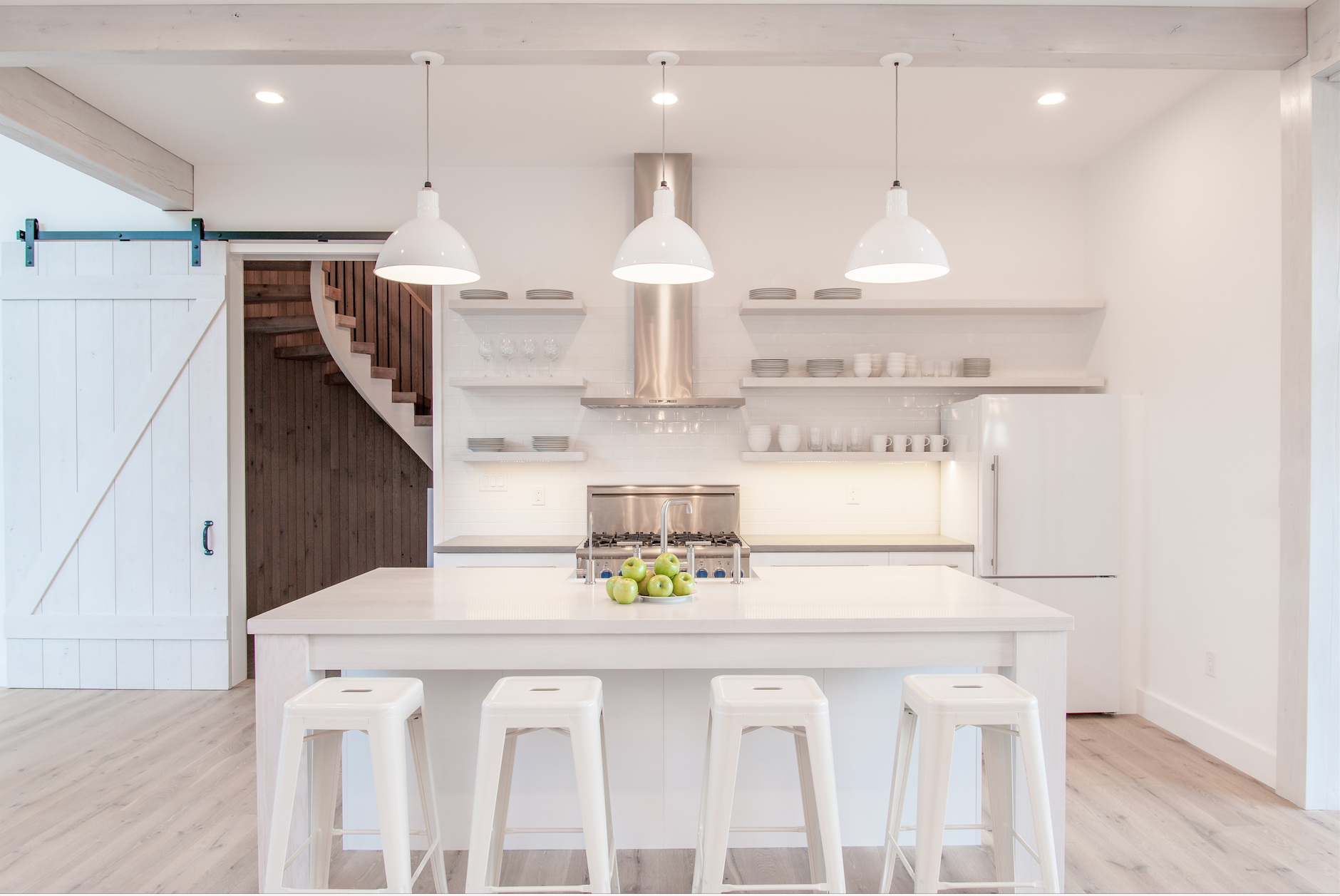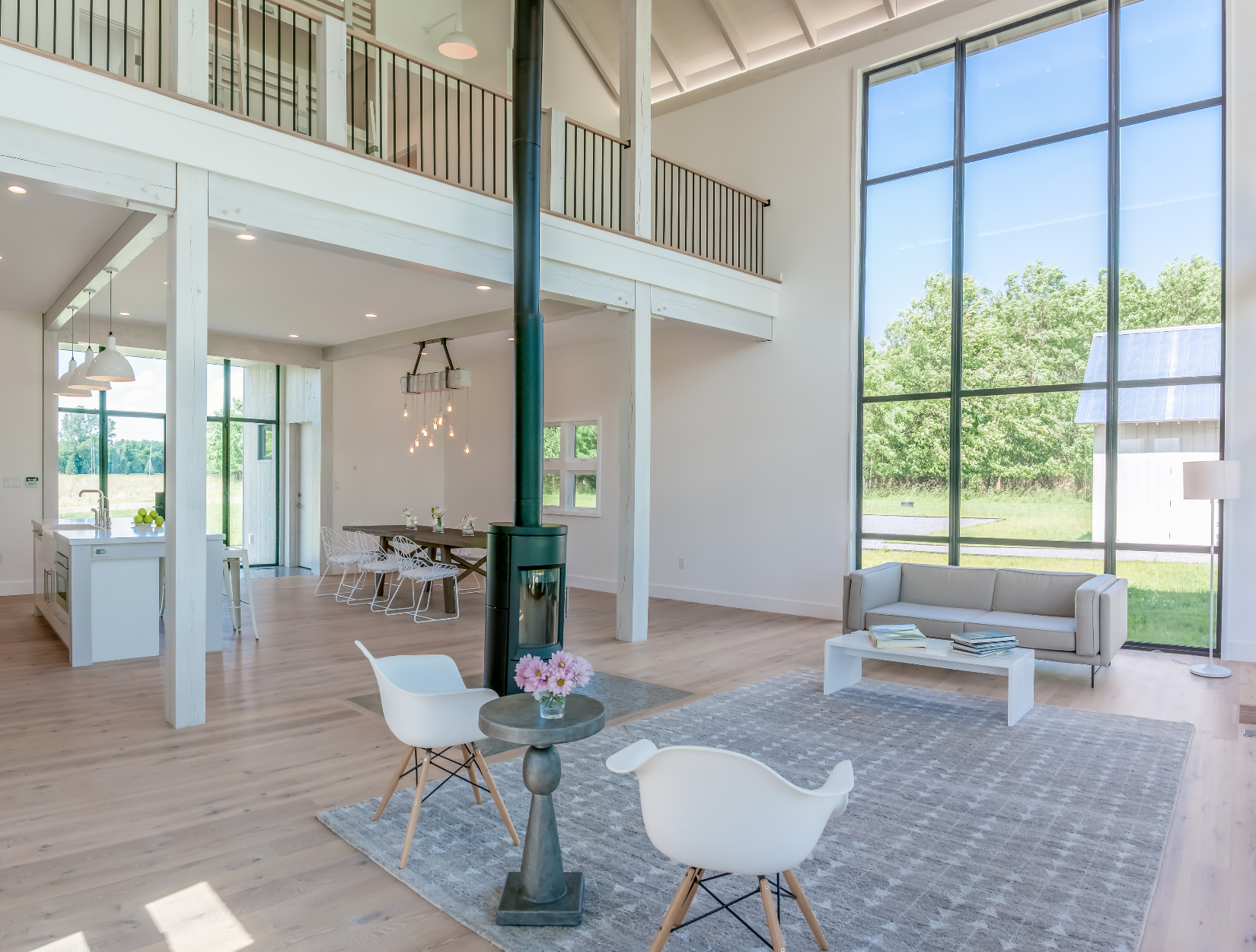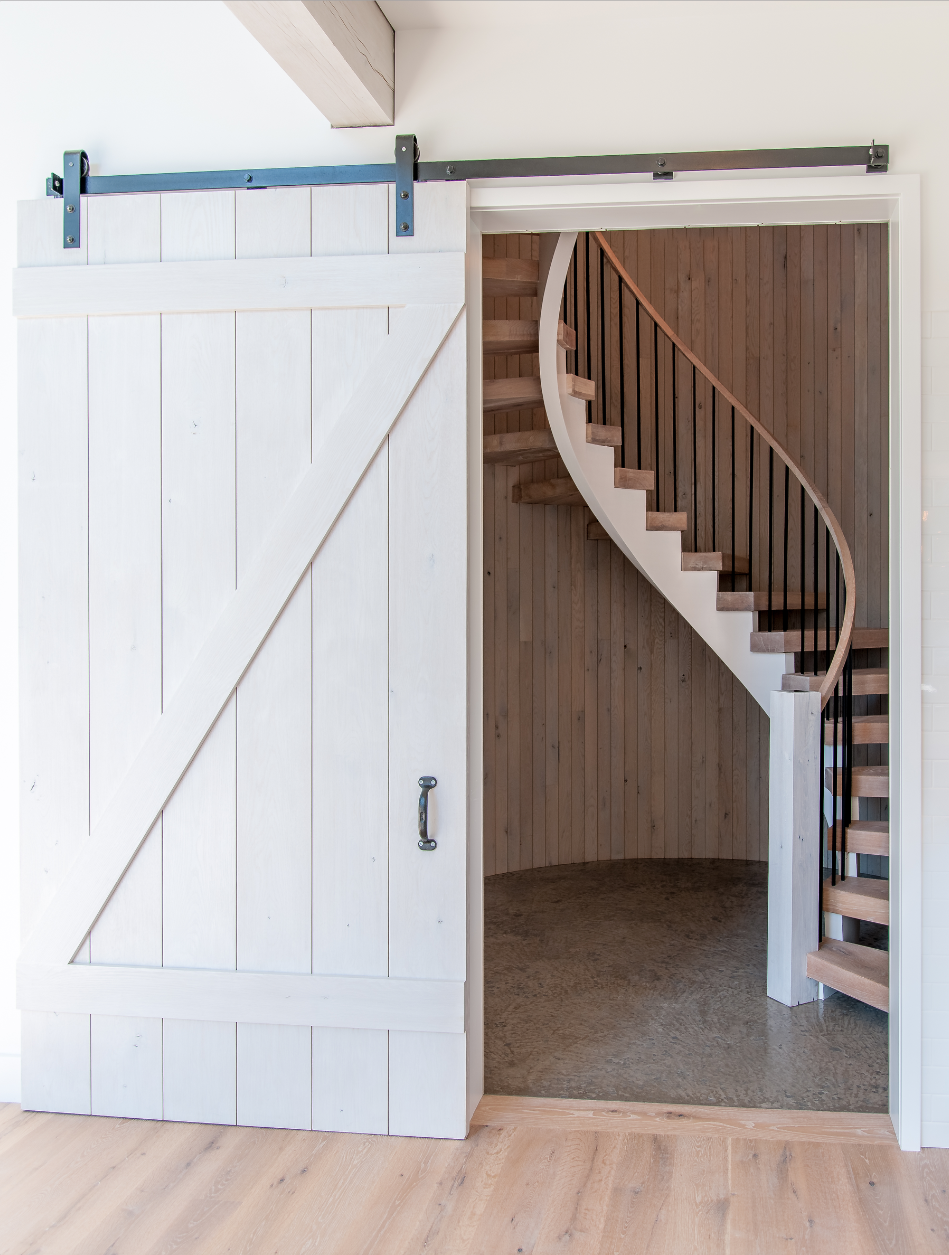- © 2025 Annapolis Home Magazine
- All Rights Reserved
If there is an iconic rural American building, it is surely the barn. Barns speak to us on an emotional level. They evoke a feeling for our agrarian past with a simplicity that is the perfect antidote for our fast paced modern lives. But for all of their nostalgic appeal, barns have sometimes inspired modernist architecture. Their style is typically simple and direct, exemplifying Mies van der Rohe’s famous edict that “less is more.”
 With its simple geometry and bucolic setting overlooking a quiet river of the Eastern Shore, this gem at the edge of a field could easily be mistaken for a working barn. Vertical wood cladding leads the eye upward. A silo is wrapped in corrugated steel and secured with cables set at uneven intervals that gradually increase as they march up the silo, replicating an actual farm silo. Opening a pair of two-story barn doors on the gable end, you could easily imagine tractors, farm animals, bales of hay and the silo filled with corn. But when you slide open the doors, you find a recessed glass vestibule framing a sophisticated modern interior and a glass wall at the far end with views of the river.
With its simple geometry and bucolic setting overlooking a quiet river of the Eastern Shore, this gem at the edge of a field could easily be mistaken for a working barn. Vertical wood cladding leads the eye upward. A silo is wrapped in corrugated steel and secured with cables set at uneven intervals that gradually increase as they march up the silo, replicating an actual farm silo. Opening a pair of two-story barn doors on the gable end, you could easily imagine tractors, farm animals, bales of hay and the silo filled with corn. But when you slide open the doors, you find a recessed glass vestibule framing a sophisticated modern interior and a glass wall at the far end with views of the river.
This structure is actually a modern guesthouse in the guise of a barn. It’s part of a farm property that Kip and Beth Fulks purchased four years ago as a weekend retreat for themselves and their two sons. It’s the small cousin to the main house, which is nearing completion on the 12-acre property. “We had a vision for the property from the day we bought it” says Kip, who is chief product officer at the Baltimore-based Under Armour. A big part of that vision was an appreciation of its location. “We wanted the property to be respectful of the history of the Eastern Shore.” And it is. In fields sometimes planted hundreds of years ago, working farms continue to define the landscape. This newly built barn is an homage to that agricultural tradition.
The Fulkses spent several years using the existing house on the property but knew that they would be replacing it with a guesthouse. On a friend’s recommendation, they reached out to Lynbrook of Annapolis and were impressed with both the firm’s track record of building large custom homes and the personal involvement of the firm’s president, Ray Gauthier. Gauthier immediately and consistently exceeded their expectations as he helped them through the long and complex process of fulfilling their vision.
The owners knew that this especially creative project needed the right designer and together with Lynbrook they selected Devin Kimmel of Kimmel Studio in Annapolis. Kimmel is both an architect and landscape architect and he used both skills. Collaborating with David Mallon of Lynbrook, the team artfully integrated the barn with the surrounding landscape, the river and the large main house.
 The challenge for this project was “tying into the history of the site and the river,” says Kimmel. David and Devin shared the Fulkses’ appreciation for the site and knew that the barn would be part of the landscape history and the human history of the site and region. “There is a certain look and feel to a pastoral landscape,” notes Kimmel. “The feeling is what drove the architecture.” The Fulkses wanted a secondary utilitarian building with “a secret,” Mallon explains. “The building envelope is this ordinary vernacular barn, but as you look closer, it reveals itself as more modern with large spans of glass and wide open living [space].”
The challenge for this project was “tying into the history of the site and the river,” says Kimmel. David and Devin shared the Fulkses’ appreciation for the site and knew that the barn would be part of the landscape history and the human history of the site and region. “There is a certain look and feel to a pastoral landscape,” notes Kimmel. “The feeling is what drove the architecture.” The Fulkses wanted a secondary utilitarian building with “a secret,” Mallon explains. “The building envelope is this ordinary vernacular barn, but as you look closer, it reveals itself as more modern with large spans of glass and wide open living [space].”
A simple barn seems to await you. However, the moment you step through the front door, you’ve entered a modern realm. Beth Fulks’ vision was the driving force behind the minimalist interior. Floors are a light oak accented with concrete at the entryway and under the fireplace. To the right is an open kitchen behind a painted wood island with simple white shelves holding stacks of white dishes. Lynbrook built the custom chandelier in the dining area from Beth’s design. Its large and primitive wood base and array of clear bulbs introduce boldness and texture to the space as do the large post and beam timbers that rise dramatically to the full height of the house. Through the large glass—the central feature of the house—the outside floods in.
 From the living room, a custom spiral staircase winds up through the silo to the second floor. The staircase was built off- site. Lynbrook had to hoist it on a crane and gingerly lower it into the completed silo, which was only an inch wider than the staircase. The sleeping quarters upstairs evoke the imagery of a hayloft. In one of the rooms, triple bunk beds form a tower that provides breathtaking views.
From the living room, a custom spiral staircase winds up through the silo to the second floor. The staircase was built off- site. Lynbrook had to hoist it on a crane and gingerly lower it into the completed silo, which was only an inch wider than the staircase. The sleeping quarters upstairs evoke the imagery of a hayloft. In one of the rooms, triple bunk beds form a tower that provides breathtaking views.
When the Fulkses began this project they thought about other houses and settings they admired. “We stole a little bit from everything we like,” says Kip. “We were inspired by Tidewater homes and homes on Martha’s Vineyard.” These vernacular homes are especially beautiful because they reflect history, time and place. The Fulkses wanted their property to do the same, to “tell a story.” But no matter how dramatically that story resonates or how much you are awed by the skillful and intelligent construction, in the end Kip Fulks says that “the story for us is one of use … we valued the use more than the visual.”
The barn from afar is a familiar silhouette against the sky. It will stand firm for many years for it rises from a foundation of friendship, family and relationships.
RESOURCES:
Lynbrook of Annapolis, lynbrookofannapolis.com
Kimmel Studio, kimmelstudio.com
Kitchen Cabinets: Kitchen Encounters, kitchenencounters.biz
Posts and Beams: Timber Trusses-Lancaster Timber Frames
Hardwood Flooring: Floor and Beyond, floorandbeyondva.com
Windows: Hopes Windows, hopeswindows.com
Annapolis Home Magazine
Vol. 7, No. 5 2016